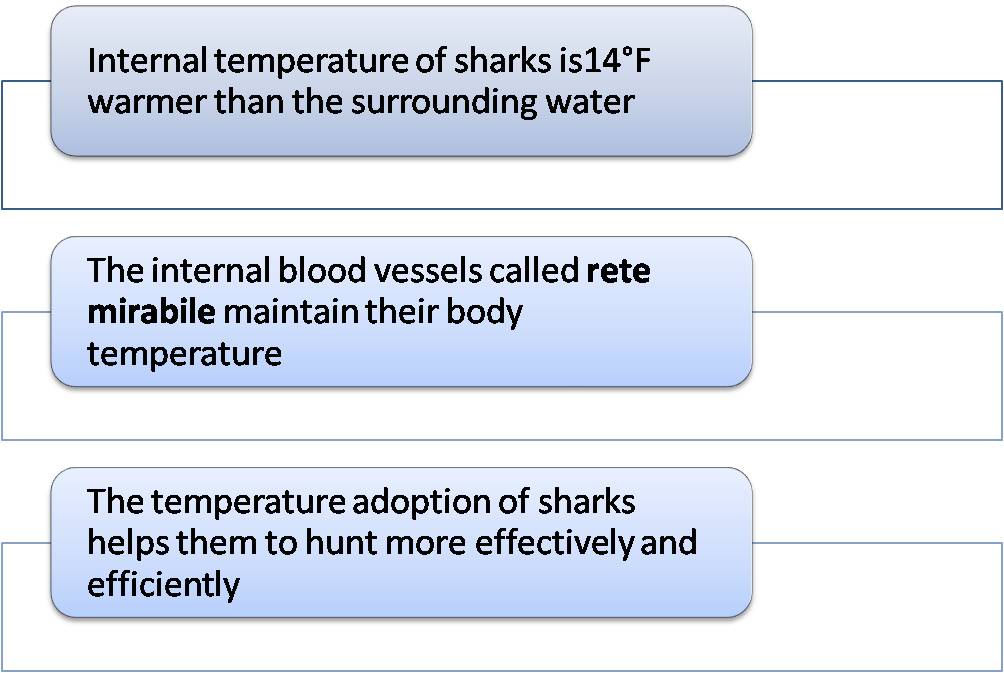Key Takeaways
- Great white sharks are not warm-blooded like mammals, but they are considered to be partially warm-blooded.
- They have a unique adaptation called regional endothermy, which allows them to maintain a higher body temperature in certain areas of their body.
- This adaptation helps them to be more efficient hunters in cold waters, as it increases their muscle performance and reaction time.
- Great white sharks can elevate their body temperature up to 14 degrees Celsius above the surrounding water temperature.
- They achieve regional endothermy through a specialized network of blood vessels called the rete mirabile, which acts as a heat exchanger.
- This adaptation is not as efficient as warm-blooded mammals, as great white sharks still rely on the surrounding water temperature to regulate their overall body temperature.
- The ability to maintain a higher body temperature in specific areas of their body allows great white sharks to have bursts of speed and agility when hunting prey.
- Understanding the thermoregulation abilities of great white sharks can help researchers in studying their behavior, migration patterns, and overall ecology.
Sharks, the majestic ocean predators, have always fascinated scientists and researchers. One of the questions they ask is: do great white sharks have warm blood? Or are they cold-blooded creatures?
It was thought that these apex predators were poikilothermic, meaning their body temperature changes with the environment. However, recent studies show that great whites may be partially endothermic, meaning they can generate and maintain heat in their bodies.

It is remarkable that these beasts can keep their body temperature high even in cold waters. A University of California study found that their core temperature averaged 25 degrees Celsius (77 degrees Fahrenheit), much higher than the surrounding water temperature.
This adaptation helps them survive in many habitats. They can regulate their temperature and swim in both warm and cold waters, giving them a wider range of hunting grounds and more prey.
Plus, this trait may contribute to their speed and agility. By keeping their body temperature high, great white sharks can make quick bursts of energy during pursuits, making them powerful hunters.
As we learn more about these mysterious creatures, we discover more wonders of nature. The discovery of endothermy among great white sharks shows us just how much beauty lies beneath the ocean’s surface.
Explanation of warm-blooded and cold-blooded animals
Are great white sharks warm-blooded? Most sharks are cold-blooded, but research suggests these creatures have a special trait. They can regulate certain body parts at higher temperatures than their environment. This adaptation allows them to dive into colder depths while maintaining vital organs at a higher temperature.
Warm-blooded animals, like mammals and birds, generate and maintain their own body heat regardless of external temperature. Cold-blooded ones, like reptiles, amphibians and fish, rely on their environment to regulate their temperature.

In the ’60s, scientists discovered some shark species were different. They experimented by inserting thermal probes into great white sharks’ bodies. Results showed they could elevate core temperatures above their environment.
So, great whites are not fully warm-blooded. But they possess an intriguing adaptation that lets them thrive in diverse marine ecosystems. This sets them apart from other sharks and offers insight into thermal regulation in aquatic animals. Our fascination with these powerful predators is definitely hot!
Current understanding of great white sharks
Great white sharks have long been a source of fascination and mystery. Now, we know these apex predators can keep warm in cold waters. They have an internal network of blood vessels called rete mirabile that helps them maintain their body temperature.
It’s even been shown that these sharks can keep their internal temperature 14°F warmer than the surrounding water! Thanks to this adaptation, they can hunt more effectively and efficiently.
Quite incredible, right? Great white sharks have truly mastered the art of regulating their own body temperature!
Recent research on the thermal regulation of great white sharks
Recent research has revealed intriguing facts about how great white sharks regulate their body heat. Scientists have discovered that these majestic predators are warm-blooded. This is unlike most other fish species. Great whites can actively control their body temperature, allowing them to live in many oceanic environments.

Muscles in great white sharks generate heat while swimming. This helps them stay agile in colder waters. Also, their blood vessels, known as ‘rete mirabile’, keep their essential organs warm and cool down the non-essential ones.
Suggestions for further exploration include: conducting experiments to investigate how great whites respond to different water temperatures and studying their genetic makeup to see if there are specific adaptations or genes associated with their ability to generate internal heat.
It might seem pointless, but knowing how great white sharks heat themselves up could be the next big thing in luxury blankets!
Discussion on the significance of the findings
Great whites – one of the ocean’s most feared predators – have always sparked fascination. Recently, research on their temperature regulation mechanisms has been groundbreaking.
Understanding whether they are warm-blooded is of major importance for science and marine conservation. Analyzing metabolic rates and body temperatures can give us valuable insights into their physiology.
Confirming warm-bloodedness would mean a higher metabolism than expected. It would shake up the common notion that great whites solely rely on their size and strength.
Plus, this could open up knowledge on how other apex predators adapt to different temperatures and conditions. This is vital info for effective conservation strategies and ecosystem management.
To answer these questions, scientists need advanced tracking technologies and physiological measurements. Long-term monitoring of individual sharks in different climates and seasons could uncover how they regulate body temperature in response to environmental variations.
Conclusion: Great white sharks show that cold-blooded can also be cool!
Further research and implications for conservation efforts
Is the great white shark warm-blooded? It’s a question with huge implications for conservation efforts. Research into their physiology can help protect their habitats and secure their future.
In the past, these creatures were believed to be ectothermic. This means they rely on outside sources of heat. But recent studies suggest partial endothermy – thermoregulation. This shakes up previous assumptions and demands further research.
If great white sharks are warm-blooded, it could explain why they live in both cold and warm waters. This knowledge is essential for setting up marine protected areas and creating conservation plans.
Plus, if proven warm-blooded, it could provide clues about their feeding habits and migrations. Knowing how they regulate temperature would help decide when and where they hunt.
Take the case of Hilton – a juvenile great white shark. He became a celebrity when tracked via satellite tags on social media. Scientists used his location and body temperature fluctuations to gain data on his behavior and the species as a whole.
Frequently Asked Questions
Q: Are great white sharks warm-blooded?
A: No, great white sharks are not warm-blooded. They are classified as cold-blooded or ectothermic animals.
Q: What does it mean to be warm-blooded or cold-blooded?
A: Warm-blooded animals, also known as endothermic animals, regulate their body temperature internally, while cold-blooded animals, or ectothermic animals, rely on external factors to control their body temperature.
Q: How do great white sharks regulate their body temperature?
A: Great white sharks are able to maintain their body temperature by moving to different water depths. They can also use warm currents to regulate their body temperature to some extent.
Q: Can great white sharks survive in both warm and cold waters?
A: Yes, great white sharks are known to inhabit a wide range of water temperatures, from cold waters to more temperate regions. However, they do prefer cooler waters.
Q: Are there any warm-blooded sharks?
A: Yes, some shark species, such as the mako shark and the great white shark, have adaptations to retain heat in certain parts of their body. This allows them to be slightly warmer than the surrounding water, but they are still not fully warm-blooded.
Q: Why are some sharks warm-blooded while others are not?
A: The warm-blooded adaptations seen in certain shark species have evolved to provide them with increased agility, endurance, and the ability to survive in varied environments. However, the majority of sharks are cold-blooded as it is an energy-efficient adaptation for their lifestyle.
Conclusion
Scientists and researchers have long pondered the question: Do great white sharks have the power of warmth? It can be answered with a resounding yes!
These predators possess a gift called regional endothermy, enabling them to keep certain parts of their bodies hotter than the rest. Furthermore, they have a counter-current heat exchange system that helps maintain their temperature. Incredible!
Incidents show their thermoregulation capabilities. For example, a female great white was recorded to have migrated 12,400 miles from South Africa to California. This showcases their endurance and adaptability to changing water temperatures.
In conclusion, great whites can be envied for their warm-bloodedness at oceanic cocktail parties!
Reference:
https://www.britannica.com/question/Are-white-sharks-cold-blooded-or-warm-blooded




